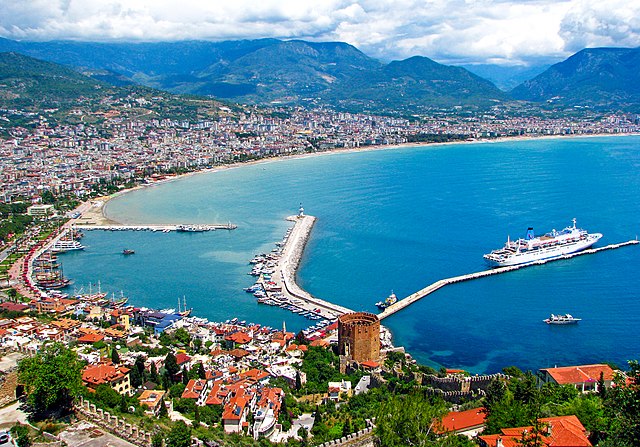Top Qs
Timeline
Chat
Perspective
Turkish Riviera
Region of Turkiye From Wikipedia, the free encyclopedia
Remove ads
The Turkish Riviera (Turkish: Türk Rivierası), also known popularly as the Turquoise Coast, is an area of southwest Turkey encompassing the provinces of Antalya and Muğla, and to a lesser extent Aydın, southern İzmir and western Mersin. The region of Turkey, located along the Mediterranean and Aegean coasts, is characterized by its climate, coastal geography, mountainous terrain, beaches, and numerous natural and archaeological sites. Extending over approximately 1,000 km (620 mi) kilometers of shoreline, it is frequently visited by both domestic and international tourists.[1]





Among the archaeological points of interest are two of the Seven Wonders of the Ancient World: The ruins of the Mausoleum at Halicarnassus; and the Temple of Artemis in Ephesus.[2]
The coastline is regarded as a cultural trove that provides background on a fascinating mixture of factual and mythological individuals, conflicts and events, and has frequently been referred to in the folklore of various cultures throughout history. As such, it is regarded as the home of scholars, saints, warriors, kings, and heroes, as well as the site of numerous well-known myths. Mark Antony of the Roman Republic is said to have picked the Turkish Riviera as the most beautiful wedding gift for his beloved Cleopatra of Egypt.[3] Saint Nicholas, who later became the basis of the Santa Claus legend, was born in Patara, a small town close to present-day Demre.[4] Herodotus, regarded as the "father of History", was born in Bodrum (ancient Halicarnassus) in c. 484 BC.[5] The volcanic mountains to the west of Antalya, near Dalyan, are believed to have been the inspiration for the mythical Chimera — the fire-breathing monster that Bellerophon slew.[3]
Remove ads
Communities and settlements
Many cities, towns and villages in the area are internationally known, such as Alanya, Antalya, Belek, Bodrum, Çeşme, Dalyan, Didim, Fethiye, Kalkan, Kaş, Kemer, Kuşadası, Marmaris, and Side.
Notable places on the Turkish Riviera include:
- Akbük
- Akyaka
- Alaçatı
- Alanya
- Antalya
- Armutalan
- Beldibi
- Belek
- Beycik
- Bitez
- Bodrum
- Bozburun
- Çamyuva
- Çeşme
- Çıralı
- Dalaman
- Dalyan
- Datça
- Demre
- Didim
- Fethiye
- Finike
- Gazipaşa
- Göcek
- Gökova
- Gümüşlük
- Güzelçamlı
- Hisarönü
- Ilıca
- İçmeler
- Kalkan
- Kaş
- Kekova
- Kemer
- Kızkumu
- Kumluca
- Kuşadası
- Konyaaltı
- Köyceğiz
- Lara
- Manavgat
- Marmaris
- Milas
- Muğla
- Olympos
- Ortaca
- Ovacık
- Ölüdeniz
- Ören
- Özdere
- Patara
- Selçuk (Ephesus)
- Selimiye
- Side
- Simena
- Torba
- Turgutreis
- Turunç
- Türkbükü
- Ulupınar
- Yalıkavak
Remove ads
Gallery
- Typical architecture of Alaçatı
- Tip of the Alanya peninsula
- Yivli Minaret Mosque, near the Gulf of Antalya
- View of the Fethiye coast
- Cape Gelidonya near Finike is the site of the wreck of a Phoenician merchant ship from c. 1200 BC
- Moonlight Beach in Kemer
- A view of Güvercinada island, Kuşadası
- Manavgat waterfall
- Marmaris Castle, built by Suleiman the Magnificent during his campaign against the Knights of Rhodes
- Karaca in Marmaris
- Olympos Beach
- Ancient ruins in Patara
- The ruins of the Temple of Apollo, near Side
- Exterior walls of the ancient theatre in Side
Remove ads
See also
Notes
Wikiwand - on
Seamless Wikipedia browsing. On steroids.
Remove ads






























